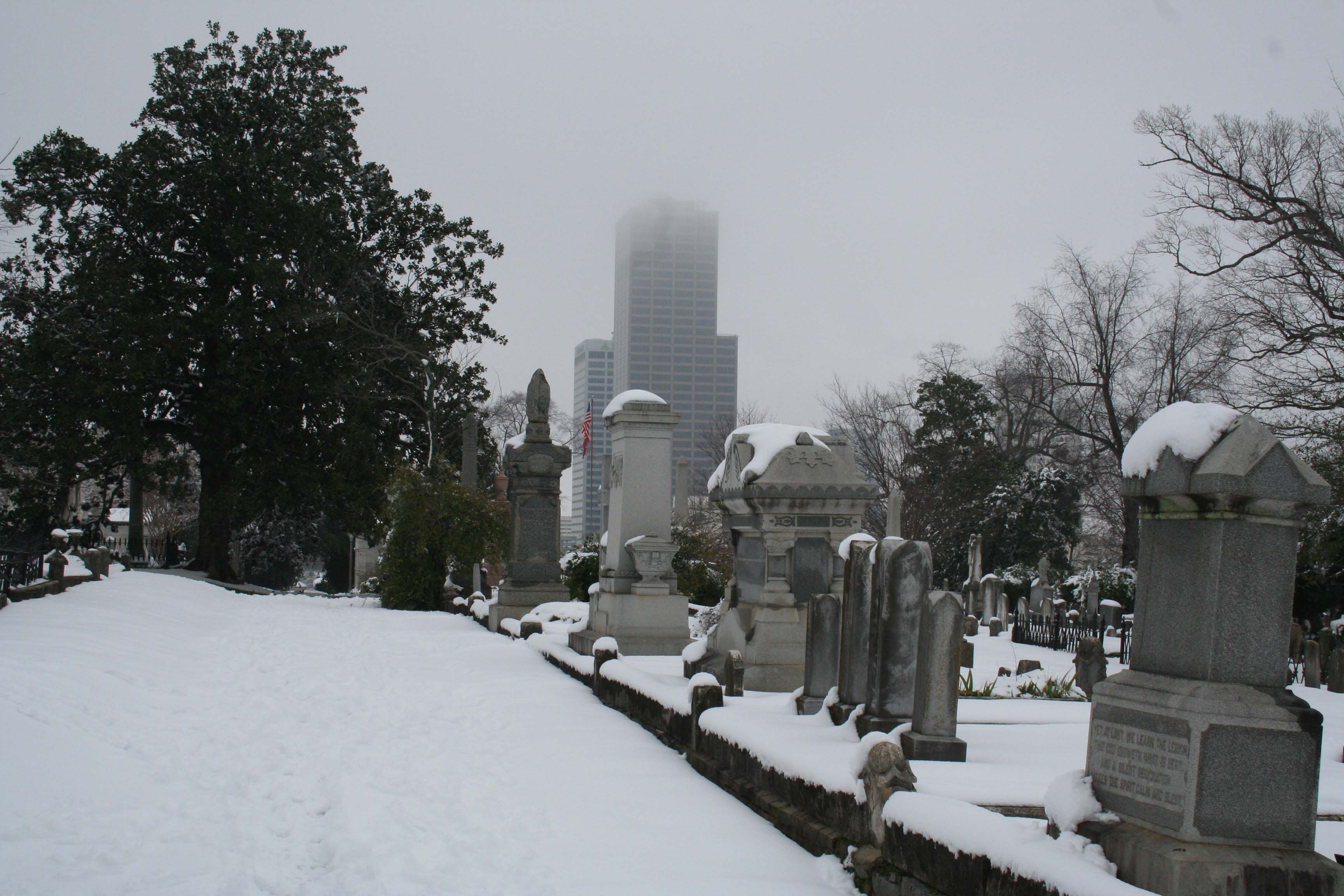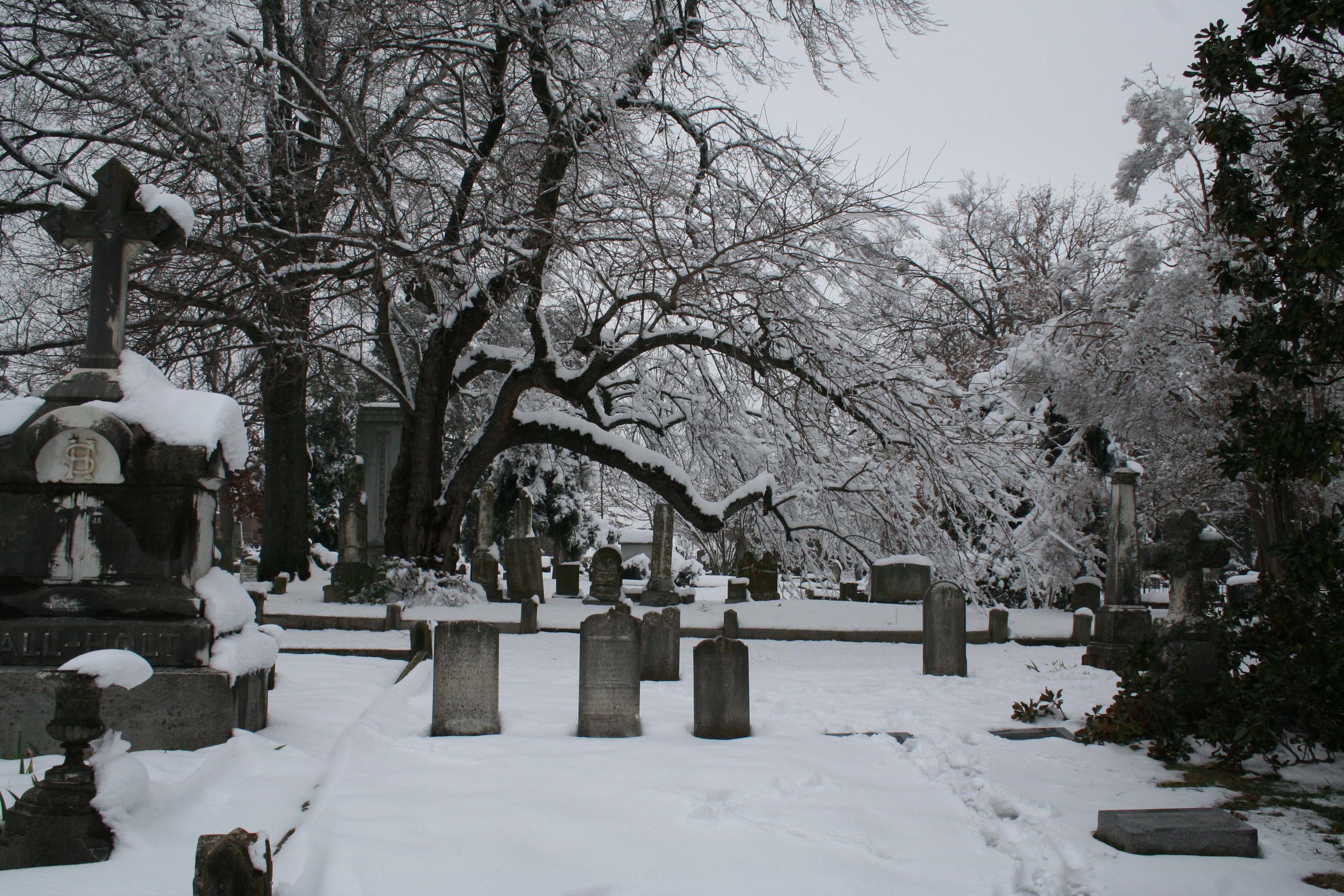Sacred history: Little Rock’s Mount Holly Cemetery
February 24 - March 2, 2025
By Jay Edwards
One of Little Rock’s most serene settings sits on a four-square block just on the north edge of downtown, between 11th and 13th streets and from Broadway to Gaines, just as it has for the last 181 years. While the size of Mount Holly Cemetery is the same as it was at its beginning, its eternal residency list has grown, and continues to be a who’s who for anyone interested in Arkansas history.
On February 14, 1843, two of Little Rock’s more prominent citizens, one originally from Massachusetts and the other from New York, deeded the land where Mt. Holly sits to the city for that purpose it has always served, that of a final resting place for its citizens, which includes among others, 12 Arkansas governors (Jim Guy Tucker became the 12th this month), four U.S. senators, 13 Arkansas Supreme Court justices, four Confederate generals and 21 Little Rock mayors.
Those benefactors of the land for Mount Holly were Chester Ashley and Roswell Beebe. Ashley was born in Amherst, Massachusetts in 1791. After law school at Litchfield in Connecticut, he went west and settled in Little Rock in 1820, where he met Robert Crittenden, who had been appointed lieutenant governor of the Arkansas Territory at the age of 22 by President James Monroe. The two formed a “Partnership in the Practice of Law,” which was the beginning of Rose Law Firm, today the third oldest law firm in the U.S. Ashley and Crittenden dissolved their partnership in 1832 and Ashley was joined in his practice by George Watkins in 1837. In 1844, Ashley was elected to the United States Senate and served as Chairman of the Senate Judiciary Committee. Watkins became the Chief Justice of the Arkansas Supreme Court in 1852.
Beebe haled from a wealthy family in Hinsdale, New York. He was born in 1795, and after convincing his father he was old enough, left for New Orleans when he was 17, where he fought the British with Andrew Jackson at the Battle of New Orleans in 1815. After succeeding in business in the Crescent City, Beebe moved to Fulton, Arkansas in 1834, following advice from doctors looking to relieve his rheumatism through drier climates. The next year his condition hadn’t improved much and he moved to Little Rock and into Ashley’s home, to try and recover.
In the two decades leading up to Arkansas’s statehood, men of vision and means began acquiring land in Little Rock. However much of the land that was sold did not come with clear title. Beebe, with his health now improved, purchased property that encompassed 240 acres, and which also came with the only clear title in town. That 240 acres was most of the city. Later that year Beebe traveled to Washington DC where he obtained the original patent for Little Rock, signed by President Van Buren. When he returned home he gave clear title to people who had bought lots, for the sum of one dollar. In December 1839, he drew up a plan for Little Rock, laying off blocks and streets. He deeded the streets and alleys to the city for a dollar, and gave the state the title for the land on Markham Street, where the new capitol building was located. In 1852, he donated the land for a school, which opened in 1853 with sixty-eight students. Roswell also donated land for a cemetery, which became Mount Holly.
Before the establishment of Mount Holly, burials were made in private family cemeteries and a public burial ground on what would first become the Peabody School site and later the location of the present-day Federal Building at Capitol Avenue and Gaines Street. A number of grave markers with dates predating the formation of Mount Holly represent reinterments from the Capitol Avenue site.
Another notable person buried at Mount Holly is Elizabeth “Quatie” Ross, a Cherokee woman who was the wife of Cherokee Chief John Ross. She was born Elizabeth Brown in 1791 in what is now the state of Georgia, which in the latter 18th century was part of the Cherokee Nation. After the death of her first husband, she met Ross, whose father was Scottish and mother, Cherokee. Ross and Brown were married in 1813. Ross was educated, spoke English and became wealthy, mainly through tobacco farming in Tennessee. In 1816 he founded Ross’s Landing, on the Tennessee River near the Georgia border. In 1839, Ross’s Landing became the city of Chattanooga.
In 1830, President Andrew Jackson signed the Indian Removal Act, which would change the cultural landscapes of states across the south, including Arkansas, through routes later known as the Trail of Tears. After having property and land taken from him through treaties he opposed, Ross headed west with his wife and others, on four flatboats on the Hiwassee River. When the party reached Tuscumbia, Alabama, Ross bought the riverboat Victoria, and headed up the Arkansas River. Just before they reached Little Rock, Quatie Ross became ill and died from pneumonia, on February 1, 1839. When Mount Holly opened in 1843, Albert Pike had her remains moved from the city cemetery to his family plot there. Legend has it that Quatie actually died on the Trail of Tears. A letter found from a soldier, John Burnett, claimed that he saw “this noble hearted woman” die “after giving her only blanket for the protection of a sick child,” during a “terrific sleet and snowstorm.”
In 1935, the General George Izard Chapter of the United States Daughters of 1812 had a new stone marker installed at the head of Quatie Ross’s grave. Her original marker was missing, but in 1996, during an excavation, a piece of that original headstone was found and can be viewed at the Historic Arkansas Museum.
John Ross would remain Principal Chief of the Cherokee Nation through the end of the Civil War until his death the following year in 1866. He was buried in Wilmington, Delaware by his second wife Mary but was removed a few months later by members of the Cherokee Nation who moved his remains to the Ross Cemetery n what is now Cherokee County, Oklahoma.
In April of 1993, during its sesquicentennial anniversary, Channel 11 anchor Joe Quinn did a piece on Mount Holly, where he interviewed ladies of the Mount Holly Cemetery Association, which has been in existence since its incorporation in 1915. One of Quinn’s tour guides for the piece was Peg Newton Smith, a founder of both the Arkansas Museums Association and the Quapaw Quarter Association, and the wife of Justice George Rose Smith, who sat on the Arkansas Supreme Court for 38 years.
Smith pointed out some of the unusual language found on many of the monuments. Particularly one of a boy who had been shot in a hunting accident. “Instead of saying that, it says, ‘He was instantly deprived of life by the discharge of a gun.’ It just softened the blow, I guess.”
Most of the women in the Association can trace their own family roots, as one lady related. “My husband’s parents are buried here, in the newer part of the cemetery. Judge Pat Mahaffey. He was on the 8th Circuit Court of Appeals.”
Hundreds of men killed in the Civil War were originally buried there but were later moved to the National Cemetery in east Little Rock. Others moved for different reasons as Smith related. “There was a section set aside for Catholic burials, for Jewish burials and for Black burials. When the Catholics opened Calvary in the 1870’s, many families moved their loved ones there.”
There are two graves of men who died on the same day, July 22, 1864, at the battle of Atlanta in the Civil War. Anderson Watkins, born in Little Rock on May 18, 1842, was the son of the aforementioned law partner of Chester Ashley, Chief Justice George Watkins.
John Edward Murray was also mortally wounded July 22nd while leading three regiments in an attack on a Union position. He died the next day. Originally buried in Georgia, his remains were moved in 1867. The two soldiers are buried side by side.
Then there is the story of one of the first Little Rock firefighters killed in the line of duty. “He fell off the front of the wagon as they were going around a curb,” Smith said, “and the back wheels ran over him. Even though they had been great rivals, the other volunteer fire departments all chipped in and bought this monument for him.”
Smith passed away in 2003. She is buried next to her husband at Mount Holly.
(Sources: mounthollycemetery.org, Encyclopedia of Arkansas, Wikipedia, American Battlefield Trust,Find a Grave)
Photos by Jay Edwards




